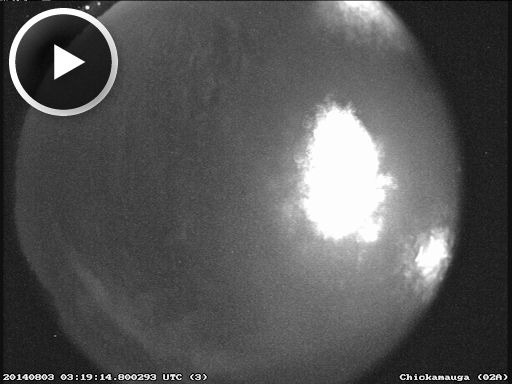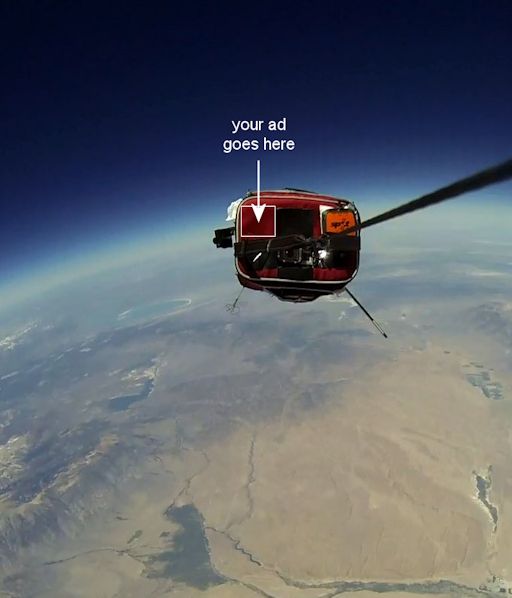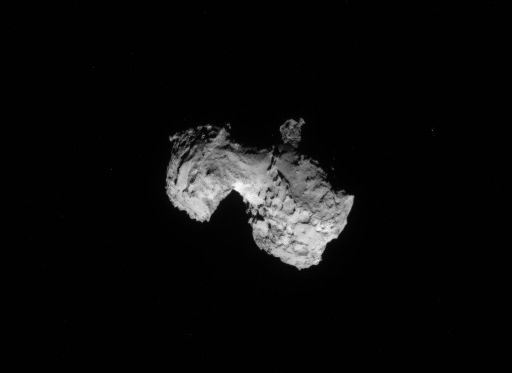New from Spaceweather.com: Edge of Space Advertising. Send your product or message to the edge of space for a down-to-Earth fee. Profits support student space weather research. Email Dr. Tony Phillips for more information. | | |
CHANCE OF FLARES: Sunspot AR2130 is directly facing Earth and it has a complex 'delta-class' magnetic field that harbors energy for strong flares. The question is, will this stubbornly-quiet sunspot actually erupt? NOAA forecasters estimate a 45% chance of M-flares and a 10% chance of X-flares on August 4th. Solar Flare alerts: text, voice
METEOR ACTIVITY INCREASES: Meteor activity is increasing as Earth plunges deeper into tthe debris stream of Comet Swift-Tuttle, source of the annual Perseid meteor shower. Last night alone, NASA cameras recorded more than a dozen Perseid fireballs over the USA. Counts were high even though the shower's peak is still more than a week away. If you want to see some of these meteors for yourself, the best time to look is during the dark hours before sunrise. (You can also hear the Perseids on Space Weather Radio.)
The brightest meteor of the weekend was not a Perseid. Watch this video of a sporadic fireball outshining the Moon, then read on for more information:

"That was a very bright fireball on Saturday night!" reports Bill Cooke of NASA's Meteoroid Environment Office. "We are still working out the details, which we will have later today, but here is a quick assessment of what we know now: Our cameras detected this fireball at an altitude of 60 miles above Hoodoo Road south of Bradyville TN at 11:19 PM Eastern Daylight Time (10:19 PM CDT). The meteor moved south south east at a speed of 53,000 mph, and fragmented just west of Valleyhead AL at an altitude of 25 miles. Doppler radars may have picked up pieces falling to the ground near Georgia/Alabama state line." Stay tuned for updates.
Realtime Meteor Photo Gallery
SPONSOR A SPACE WEATHER BALLOON: This Friday, the students of Earth to Sky Calculus will continue their ongoing campaign of high-altitude research with the launch of another Space Weather Radiation Buoy. The purpose of their research is to discover how solar activity affects the ozone layer and alters levels of radiation at altitudes of interest to space tourism. They are also launching microbes to find out which species can survive in space-like conditions. Readers who wish to support this exciting student-led work can sponsor the flight with an ad or message to be launched with the payload and displayed as shown:

For $500 the students will fly your message to the edge of space and return it to you along with complete video of the flight. Also, selected still shots will be displayed on spaceweather.com as part of our coverage of the event. Interested? Please email Dr. Tony Phillips for more information.
Realtime Space Weather Photo Gallery
ROSETTA UPDATE: The European Space Agency's Rosetta probe is now only two days away from target Comet 67P/Churyumov-Gerasimenko. 67P is so close, in fact, that even Rosetta's relatively low-resolution navigation camera is able to take startlingly-crisp images of the comet's core.

The spacecraft was 300 km from the comet when it took this picture. 67P has a varied and interesting terrain that will surely pose challenges to mission planners who are trying to figure out where Rosetta's comet-lander, Philae, will touch down in November. It's a good problem to have!
First though, Rosetta must reach the comet and go into orbit around it. This will happen on August 6th. A video from ESA shows how Rosetta will match velocities with the comet's core and maneuver to within 30 km of the comet's surface, where the weak gravity of 67P can capture the spacecraft. Going into orbit around a comet is a historic moment in the history of space exploration. Good luck to the Rosetta team as they attempt this unprecedented feat.
Only 2 days to rendezvous! Follow the action @ESA_Rosetta.
Realtime Comet Photo Gallery
Realtime Aurora Photo Gallery
Realtime NLC Photo Gallery
Every night, a network of NASA all-sky cameras scans the skies above the United States for meteoritic fireballs. Automated software maintained by NASA's Meteoroid Environment Office calculates their orbits, velocity, penetration depth in Earth's atmosphere and many other characteristics. Daily results are presented here on Spaceweather.com.
On Aug. 4, 2014, the network reported 23 fireballs.
(13 Perseids, 9 sporadics, 1 Southern delta Aquariid)

In this diagram of the inner solar system, all of the fireball orbits intersect at a single point--Earth. The orbits are color-coded by velocity, from slow (red) to fast (blue). [Larger image] [movies]
Potentially Hazardous Asteroids (
PHAs) are space rocks larger than approximately 100m that can come closer to Earth than 0.05 AU. None of the known PHAs is on a collision course with our planet, although astronomers are finding
new ones all the time.
On August 4, 2014 there were potentially hazardous asteroids.
Notes: LD means "Lunar Distance." 1 LD = 384,401 km, the distance between Earth and the Moon. 1 LD also equals 0.00256 AU. MAG is the visual magnitude of the asteroid on the date of closest approach. | | The official U.S. government space weather bureau |
| | The first place to look for information about sundogs, pillars, rainbows and related phenomena. |
| | Researchers call it a "Hubble for the sun." SDO is the most advanced solar observatory ever. |
| | 3D views of the sun from NASA's Solar and Terrestrial Relations Observatory |
| | Realtime and archival images of the Sun from SOHO. |
| | from the NOAA Space Environment Center |
| | the underlying science of space weather |

